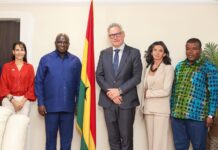Enjoying a delicious summer treat shouldn’t come at the cost of your health.
However, with increasing demand, some marketers resort to injecting chemicals to ripen the fruits quickly and ensure a stable supply.
If you’re a mango lover seeking organic and naturally ripened mangoes, here are a few tips to help you identify them:
Colour
Pay close attention to the colour of the mango. If it has green spots, it has likely been ripened with chemicals. An overly shiny or yellow appearance can also indicate chemical treatment.
Shape
The shape of a mango can be a clue. Small mangoes that appear to be dripping juice are often chemically treated. Additionally, avoid mangoes with blue or white marks, as these are signs of chemical ripening.
The dip test
Place the mangoes in a bucket of water. Those that float have likely been treated with chemicals, while naturally ripened mangoes will sink to the bottom.
The press test
Lightly press the mango. If it feels soft in some places and hard in others, it may have been ripened with chemicals.
Check for spots
Naturally ripened mangoes have brown spots, while chemically ripened ones will have pale or white spots. This can be an effective way to differentiate between the two.
Consuming chemically ripened mangoes can cause irritation in the throat and a burning sensation in the stomach, leading to stomach aches.
Calcium carbide, commonly used in this process, releases acetylene gas when it comes into contact with moisture.
This can pose health risks such as skin irritation, respiratory issues, and gastrointestinal problems.
Enjoying a delicious summer treat shouldn’t come at the cost of your health. By following these tips, you can avoid consuming chemically ripened mangoes and enjoy the natural, sweet taste of organically ripened ones.
Stay vigilant and choose wisely to make the most of mango season!








